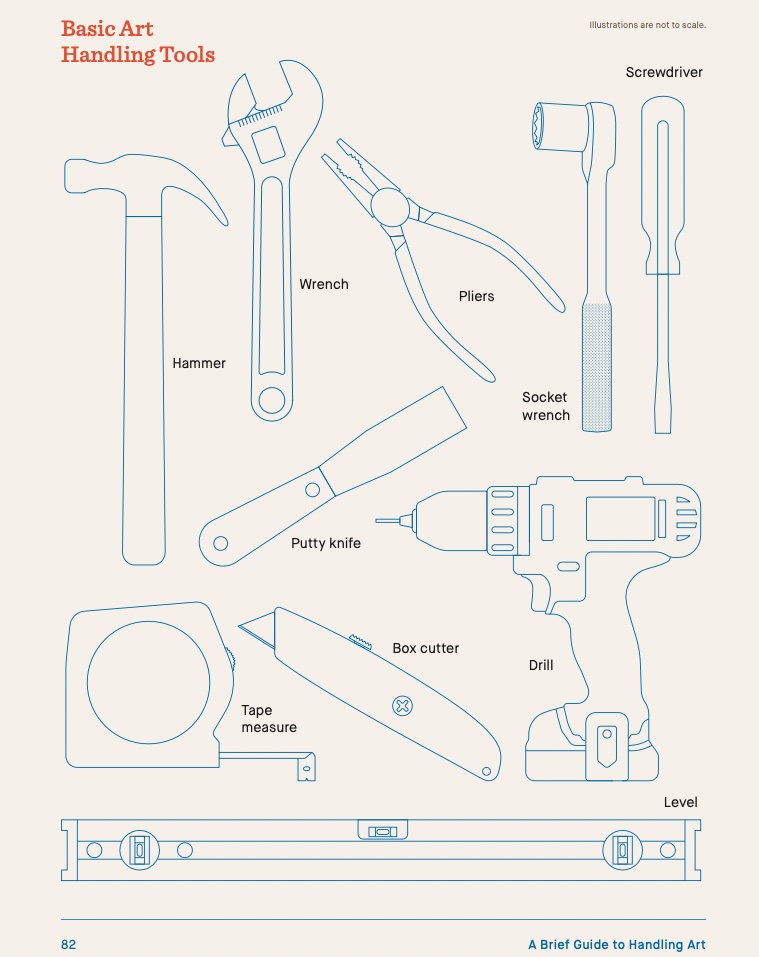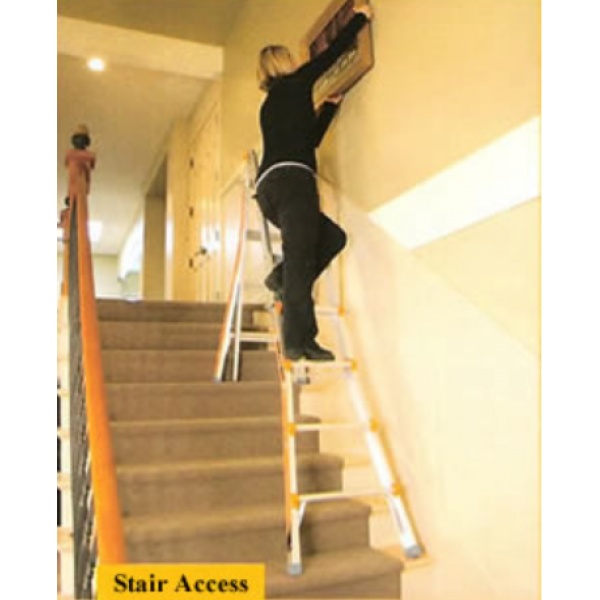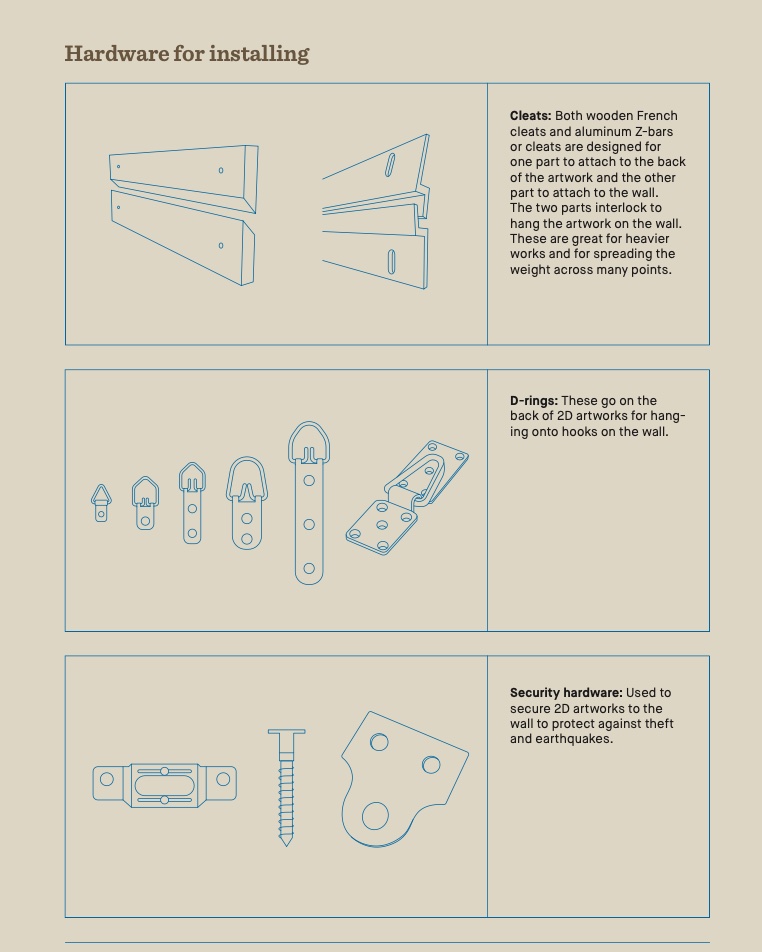Tools of the Trade
What does a person use when installing artworks?
by Gregory Frederick
Most people would use a nail and hammer to install a piece of art and be done with it. In some cases this would be true, however like the vast array of art and styles, there are many different needs in installing a piece of art. The well equipped art installer will carry a tool box filled with what they could need depending on the situation. There are then the tools of the trade that an art handler will use to complete a task. The tools of the art handling trade are much more than just the hammer, nails and a screwdriver, but also ladders, scaffolding, and other lifting equipment. The hanging hardware and other miscellaneous materials needed such as cut wood, foam, and shims are also part of their tools.
The Tools
What then is in the installer’s tool box? There are the obvious tools of hammer and level and the power drill for drilling and screws, but what else? There are also screwdrivers, a socket wrench with various sized sockets standard and metric, assorted pliers, putty knives, box cutter, tape measure and pencils. An understanding and ease with the use of these tools is essential to the art handler. The experience and art handlers has with these tools comes from a variety of backgrounds including arts and crafts, but also carpentry, automotive, industrial installation such as cable, electrical or plumbing, among others.

Ladders and Lifts
An art installer needs to be able to install in unusual locations and heights and that requires the use of ladders or other equipment. While the standard for installing 2D works like paintings or photographs on a wall call for somewhere around 57-60 inches for the center point of the work to raise it up to “eye level”, some works are put into staircases or above doorways or in a grouped “salon” style layout. This will require the use of step-stools, ladders, or more to reach these heights. Knowing which piece of equipment to use at the right time and place is part of the knowledge that an art handler uses.

Hanging Hardware
The installation hardware is another piece of the art handlers tool box. An understanding of the different kinds of installation hardware is essential to the art installer. From the D-rings on the back of the frame to the weight allowance of the floreats and wall hooks, each play an important part to safely and efficiently installing a piece of art. Other hardware includes the use of cleats for heavier objects often called “French cleats”, biased cut wood planks or “Z-bar” shaped metal interconnecting strips. Some pieces require the installation of security hardware that includes the need for specialized equipment as part of the installation, locking the works into place.

As you can see the assortment of tools needed can be expansive beyond the simple hammer, nail, and level. Some jobs may require an array of tools and equipment to complete depending on a number of factors including, the type of artwork, the location of where it will be installed, and what is used to install the work. Art installation is much more than “hanging” a piece of art and can involve a variety of tools and equipment to complete. The installation of a piece of work can call for specialized tools and the experience with those tools to complete a project

